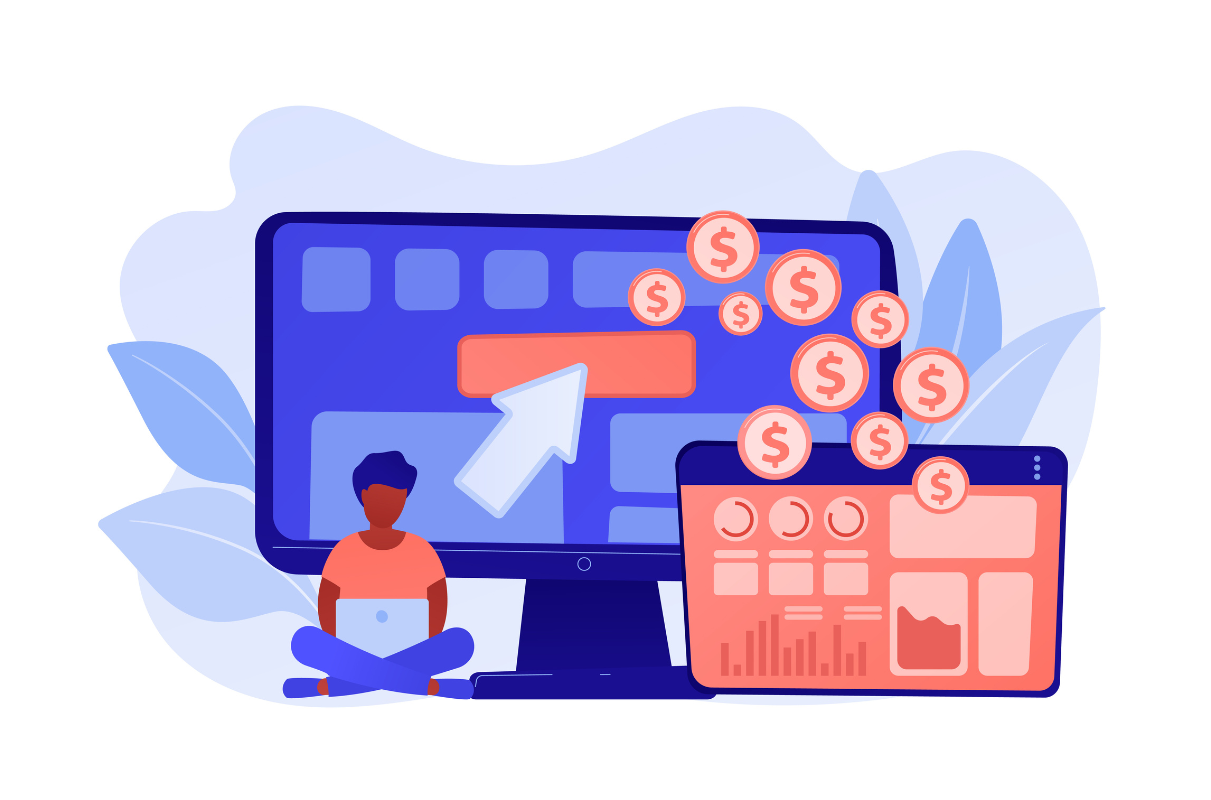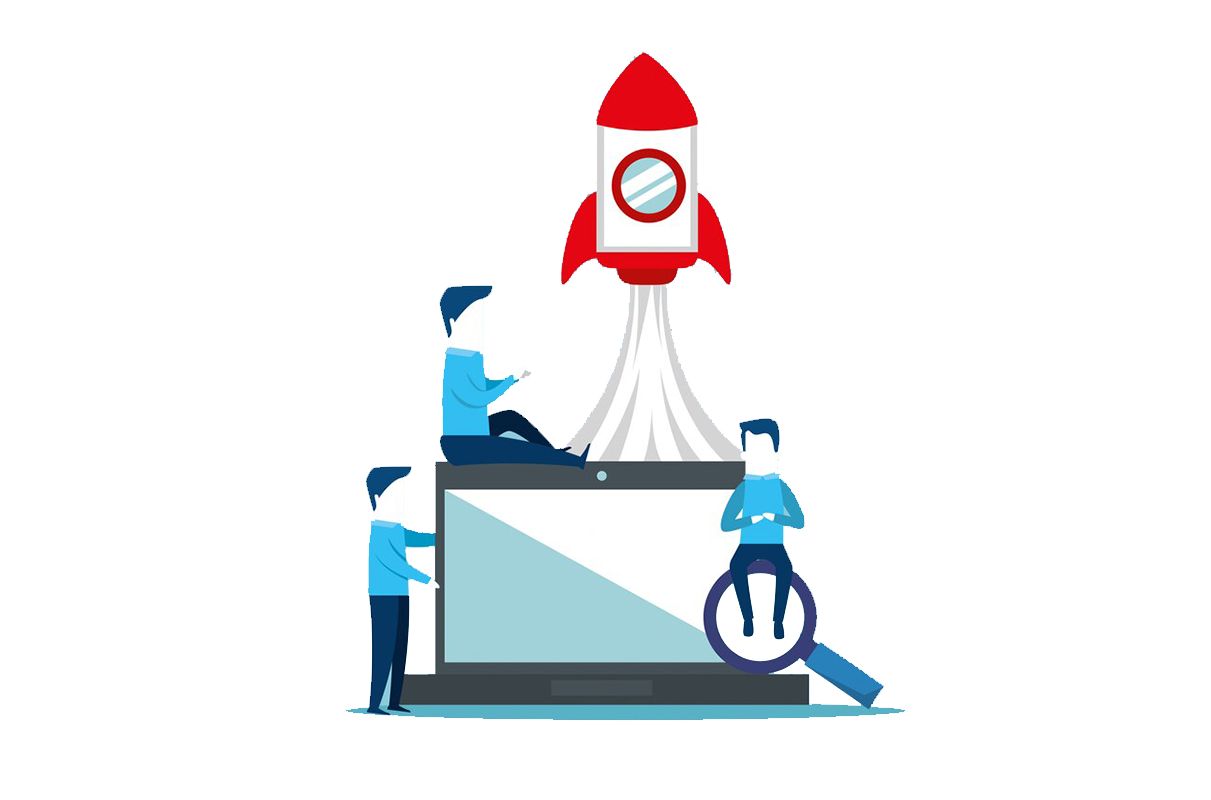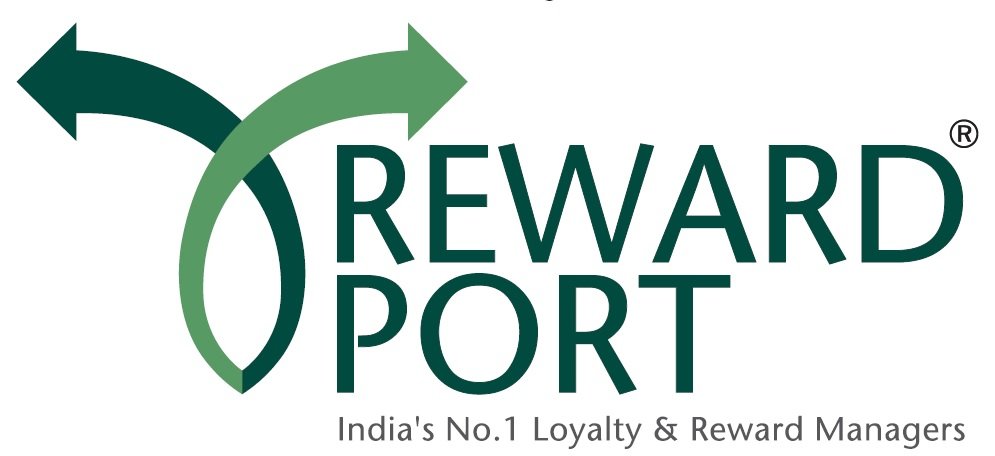
Top 10 Loyalty Program Trends to Watch in 2025
Customer loyalty has long been a cornerstone of sustainable business growth. Today, as we look ahead to 2025, loyalty programs are undergoing a transformative shift driven by emerging technologies, evolving consumer expectations, and a rapidly changing marketplace. Whether the goal is to strengthen consumer loyalty—turning casual shoppers into lifelong brand advocates—or to enhance channel partner relationships—ensuring dealers, distributors, and agents remain motivated and aligned—modern loyalty strategies are becoming more personalized, data-driven, and experience-oriented than ever before.
According to a recent study by Deloitte, consumers are increasingly attracted to brands that offer authenticity, personalized experiences, and meaningful engagements, rather than solely transactional perks. ) Meanwhile, B2B channel partners are looking for incentive structures that go beyond simple discounts. They want tiered rewards, better training, and ongoing recognition to keep them engaged. As loyalty solutions providers like RewardPort continue to innovate in this space, businesses have a wealth of new approaches and technologies at their disposal.
In this comprehensive guide, we’ll explore the top 10 loyalty program trends shaping the future. We’ll delve into how brands can leverage artificial intelligence, gamification, mobile experiences, data transparency, sustainability, and more to create loyalty ecosystems that resonate deeply with both consumers and channel partners. By adapting these trends, businesses can stay competitive, build lasting relationships, and drive long-term growth in 2025 and beyond.
1. Hyper-Personalization Through AI and Advanced Analytics
Why It Matters:
In an era where customers receive countless marketing messages daily, generic loyalty offers simply no longer cut through the noise. Hyper-personalization, enabled by artificial intelligence (AI) and machine learning, empowers brands to tailor rewards, recommendations, and communications to each individual’s preference, purchase history, and engagement patterns.
What’s New in 2025:
AI-driven personalization now extends beyond basic product recommendations. Advanced analytics tools consolidate data from multiple touchpoints—online stores, in-app behavior, social media interactions, and even offline purchases—to form a holistic customer profile. With these insights, loyalty programs can deliver unique incentives that feel truly “one-to-one.” For consumers, this might mean receiving a reward for a frequently purchased item or a special discount timed perfectly for a known replenishment cycle. For channel partners, personalization may involve customized training modules, exclusive product previews, or marketing toolkits that align with their specific sales goals and territory needs.
Supporting Research:
A study by Accenture found that 91% of consumers are more likely to shop with brands that provide relevant offers and recommendations. With AI and advanced analytics, loyalty platforms can turn customer intelligence into actionable insights that boost engagement and conversion rates.
2. Gamification: Turning Engagement into Play
Why It Matters:
Engagement is the linchpin of a successful loyalty program. Gamification—applying game mechanics like points, badges, leaderboards, and challenges—transforms mundane interactions into enjoyable experiences that keep users coming back for more.
What’s New in 2025:
Gamification is evolving beyond points-based systems into immersive brand ecosystems. For consumers, think of mobile apps that host weekly “treasure hunts” for discounts, AR-based scavenger hunts in physical stores, or quiz-based promotions that reward product knowledge. For channel partners, gamification could mean leaderboards that recognize top-performing dealers, digital badges for completing training courses, or tiered challenges that unlock premium co-marketing opportunities.
Industry Insight:
According to Gartner, gamification can increase user engagement by up to 30% when implemented strategically. This boost in engagement is critical for brands looking to differentiate their loyalty programs and foster long-term participation.
3. Mobile-First Loyalty Experiences
Why It Matters:
Smartphones have become the primary gateway to online experiences. Brands that fail to optimize loyalty programs for mobile risk losing relevance, as customers demand convenient, on-the-go interactions.
What’s New in 2025:
By 2025, mobile loyalty programs have matured into fully integrated ecosystems. Apps offer seamless sign-ups, instant reward redemptions, real-time push notifications for nearby offers, and mobile wallets that store points, vouchers, and membership statuses. QR codes, near-field communication (NFC), and geolocation triggers help deliver contextually relevant rewards. For channel partners, mobile dashboards track real-time sales performance, enabling swift redemption of incentives or quick access to product info and marketing collateral.
Practical Example:
Consider Starbucks Rewards, often cited in loyalty marketing case studies, which seamlessly integrates ordering, payment and reward redemption in a single mobile experience. By bringing similar capabilities into broader retail and distribution contexts, brands can ensure both consumers and partners feel supported at every step.
4. Integrations with Emerging Technologies (AR, VR, IoT)
Why It Matters:
Cutting-edge technologies like augmented reality (AR), virtual reality (VR), and the Internet of Things (IoT) aren’t just buzzwords; they’re transforming how customers and partners interact with brands. Integrating these technologies into loyalty programs can create memorable, immersive experiences that set you apart from competitors.
What’s New in 2025:
- AR: Shoppers could use AR to visualize products in their homes before purchasing, earning loyalty points for each item they virtually “try.”
- VR: Brands might offer VR-based product demonstrations or store walkthroughs, granting exclusive deals for participants.
- IoT: Connected appliances and devices can automatically trigger loyalty rewards based on usage patterns. Imagine a smart fridge that recommends replenishment deals for your favorite beverage when stocks run low, crediting your loyalty account instantly.
For channel partners, IoT-driven data streams can help identify top-selling products in real-time, triggering incentives that encourage stocking or promoting those items. AR-based training modules or VR-based product demos can also help partners understand offerings more thoroughly, leading to better sales outcomes.
5. Tiered and Subscription-Based Loyalty Models
Why It Matters:
Gone are the days of one-size-fits-all loyalty programs. Modern customers and channel partners have diverse needs. Tiered loyalty frameworks and subscription-based models provide structured incentives that cater to varying levels of engagement.
What’s New in 2025:
- Tiered Models: Companies can segment customers by their purchase frequency, total spend, or product category interest. Higher tiers might unlock early access to new releases, VIP customer support, or exclusive events. For channel partners, achieving a higher tier might mean access to premium marketing materials, co-branded campaigns, or bonus incentives.
- Subscription-Based Loyalty: Some brands are experimenting with paid loyalty memberships that guarantee certain perks (like free shipping, monthly credits, or dedicated support) for a recurring fee. This model can generate a steady revenue stream and ensure a loyal customer base invested in the brand’s ecosystem.
Supporting Research:
According to McKinsey & Company, paid loyalty programs can drive higher average order values and increased frequency of purchase. These structured models also translate well for channel partners, providing clear benchmarks and rewards for hitting targets.
6. Ethical Data Practices and Transparency
Why It Matters:
As data breaches and privacy concerns dominate headlines, customers and partners want reassurance that their data is handled responsibly. Transparency around data collection, usage, and storage is non-negotiable.
What’s New in 2025:
Loyalty programs must clearly communicate how they use customer and partner data to create personalized experiences. Proactive compliance with regulations like the General Data Protection Regulation (GDPR) and the California Consumer Privacy Act (CCPA) ensures trust. Additionally, brands can offer data dashboards, allowing users to review the information stored about them, modify preferences, or opt out easily.
Business Case:
A recent PwC report shows that trust plays a pivotal role in brand loyalty, with 87% of consumers willing to leave a brand over data misuse concerns. Ethical data handling fosters credibility and strengthens long-term relationships, which is essential for both consumer and channel loyalty.
7. Community-Building and Social Engagement
Why It Matters:
Loyalty isn’t just transactional—it’s emotional. Building a community around your brand encourages customers and channel partners to engage with each other, share best practices, and collectively solve problems. Such communities create a sense of belonging and multiply brand advocacy.
What’s New in 2025:
Brands are investing in forums, private social media groups, and ambassador programs where loyal customers can interact and exchange insights. Influencer-led events, user-generated content campaigns, and referral initiatives all strengthen community ties. For channel partners—distributors, resellers, agents—community engagement might come from exclusive LinkedIn groups, dealer councils, or annual partner summits that double as incentive trips.
Industry Insight:
Loyalty360, a community and association focused on customer loyalty, highlights community building as a critical differentiator. When customers and partners feel part of a larger mission, loyalty deepens beyond discounts and points.
8. Sustainability and Social Responsibility in Rewards
Why It Matters:
Modern consumers increasingly align their loyalties with brands that reflect their values. Sustainability, fair labor practices, and social impact initiatives aren’t just buzzwords; they’re criteria for whether a customer or partner continues to engage.
What’s New in 2025:
Loyalty programs that feature sustainable rewards—like eco-friendly products, carbon offsetting credits, or donations to social causes—resonate with values-driven consumers. Channel partners also appreciate meaningful incentives; for example, a portion of their earned rewards could support local community projects or fund vocational training for their staff.
Supporting Research:
Accenture research indicates that 62% of customers want companies to take a stand on social, cultural, environmental, and political issues they care about. Integrating responsible practices into your loyalty strategy can nurture long-term loyalty rooted in shared values.
9. Integration with Digital Wallets and Contactless Payments
Why It Matters:
In a world dominated by digital transactions, frictionless payment and reward redemption experiences are paramount. Integrating loyalty points directly into digital wallets and enabling contactless payments makes the process seamless.
What’s New in 2025:
As the ubiquity of services like Apple Pay, Google Pay, and Samsung Pay grows, loyalty points can be automatically tracked and redeemed at checkout—no separate app or code required. For channel partners, simple redemption interfaces within their sales dashboards or invoicing systems streamline how they access incentives and discounts.
Industry Example:
Brands like Walgreens have integrated their loyalty programs directly into mobile payment systems. This smooth experience can be replicated across industries, ensuring customers and partners never miss out on benefits due to cumbersome redemption processes.
10. Continuous Innovation and Real-Time Optimization
Why It Matters:
The pace of change in the loyalty landscape is accelerating. Programs designed in a set-it-and-forget-it manner risk becoming outdated. Successful loyalty strategies in 2025 will embrace continuous innovation, regularly updating reward offerings, refining personalization algorithms, and experimenting with new engagement tactics.
What’s New in 2025:
Brands are adopting agile methodologies to test new loyalty features in controlled scenarios, gather feedback, and iterate quickly. AI-driven analytics enable real-time optimization—if a particular reward isn’t resonating, the program can pivot instantly. This adaptive approach keeps both consumers and channel partners engaged, ensuring loyalty programs always meet the evolving demands of the market.
As you navigate this evolving landscape, companies like RewardPort stand ready to help brands implement future-focused loyalty strategies. From customizing incentive models for channel partners to deploying advanced consumer-facing promotions, providers that specialize in loyalty solutions offer invaluable expertise, tools, and guidance.
The 2025 loyalty program environment demands an integrated, customer-centric approach that also respects and motivates channel partners. From hyper-personalization and gamification to data transparency and community-building, each trend underscores the importance of relevance, trust, and genuine value exchange. By blending advanced technology with ethical practices, sustainability, and a human touch, brands can create loyalty ecosystems that resonate on multiple levels.
Whether you’re focusing on consumer loyalty or scaling incentive programs for channel partners, these trends guide you toward strategies that stand out in a crowded marketplace. As the field continues to evolve, maintaining agility, authenticity, and innovation will be crucial. Embrace these trends to nurture stronger relationships, improve customer retention, and foster long-lasting loyalty well beyond 2025.

How B2B Loyalty Programs Drive Growth: RewardPort’s Approach to Channel Success
What Are B2B Loyalty Programs?
Business-to-business (B2B) loyalty programs are initiatives developed to foster and keep strong relationships in between companies and their business customers, suppliers, or resellers. Unlike business-to-consumer (B2C) programs, B2B loyalty programs are customized to accommodate the unique requirements and inspirations of company partners. They focus on increasing repeat purchases, encouraging long-term commitment, and improving partnership. RewardPort is a leader in developing and handling B2B commitment programs that drive growth and help business accomplish their comany objectives by developing strong channel relationships.
The Importance of B2B Loyalty Programs
In the competitive B2B landscape, is essential for growth and success. Here’s why B2B loyalty programs are necessary:
Customer Retention: Acquiring new organization customers is often costly and lengthy. B2B commitment programs help companies retain their existing clients by providing ongoing value in the type of benefits and recognition, minimizing client churn.
Improved Client Engagement: B2B programs promote engagement by fulfilling customers not simply for purchases however for numerous activities, such as training completion, recommendations, or offering feedback. ENgaged customers are more likely to stay faithful and do business over the long term.
Increased Revenue: B2B loyalty programs motivate repeat purchases, greater order volumes, and long-term contracts. The rewards provded can motivate clients to purchase more often or in larger quantities, straight adding to increased income.
Building Stronger Relationships: Loyalty programs create a sense of value and recognition, which fosters stronger relationships in between companies and their customers. Clients who feel valued are most likely to remain loyal to the brand name, advocate for it, and prioritize its products over those of rivals.
RewardPort’s B2B loyalty options concentrate on offering individualized rewards, transparent interaction, and data-driven insights to assist companies attain their growth objectives through successful channel collaborations.
Key Components of a Successful B2B Loyalty Program
To guarantee success, a B2B commitment program must have the following crucial components:
Tailored Incentives
In the B2B environment, diferent customers have different requirements and inspirations. RewardPort deals with services to design customized incentive structures that align with each customer’s choices and service objectives. For instance, some clients may choose monetary benefits like refunds or discounts, while others may value special experiences or extended payment terms.
Point-Based Loyalty Systems
RewardPort often utilizes point-based commitment systems for B2B programs. Customers earn points for numerous activities, such as making purchases, completing training sessions, or referring brand-new customers. These points can be redeemed for rewards such as discount rates, exclusive items, or travel experiences. This system is easy to understand, transparent, and provides constant motivation for clients to remain engaged.
Tiered Rewards for Greater Engagement
A tiered benefits system is an efficient way to inspire customers to increase their performance. RewardPort’s tiered programs enable clients to make higher benefits as they move to greater tiers. This develops a sense of aspiration amongst clients and motivates them to increase their order volumes or participate in more activities to unlock much better benefits.
Personalized Communication
Efficient communication is essential for a successful B2B loyalty program. RewardPort uses data-driven personalization to craft messages that resonate with each client, ensuring they are aware of their rewards, progress, and any program updates. Individualized interaction fosters a deeper connection with customers and guarantees they feel valued by the brand.
Transparent Tracking and Analytics
RewardPort offers tools for real-time performance tracking, allowing customers to monitor their development and see the benefits they are qualified for. This transparency assists build trust and motivates customers to remain engaged with the program. Furthermore, RewardPort utilizes analytics to collect insights into client habits, allowing organizations to enhance their loyalty programs for much better outcomes.
How RewardPort’s B2B Loyalty Programs Drive Growth
RewardPort’s method to B2B loyalty focuses on developing customized programs that align with company objectives and build strong, long-term relationships with clients. Here’s how RewardPort assists businesses achieve channel success:
Custom-made Program Design
RewardPort works closely with each business to comprehend its unique objectives and challenges. Whether the objective is to increase repeat orders, encourage long-term contracts, or broaden into brand-new markets, RewardPort develops a commitment program that directly aligns with these goals. By using tailored rewards that resonate with clients, RewardPort guarantees that the commitment program includes authentic value.
Technology Integration for Seamless Management
RewardPort uses sophisticated innovation to facilitate the management of B2B loyalty programs. Their loyalty platform integrates with CRM systems, permitting real-time data tracking, efficiency monitoring, and benefit redemption. This combination makes sure a seamless experience for clients, permitting them to track their points and rewards with ease.
Multi-Level Incentives Beyond Purchases
RewardPort’s loyalty programs exceed simply fulfilling purchases. They likewise incentivize other activities that add to the brand name’s success, such as completing training sessions, participating in webinars, or supplying recommendations. By recognizing a range of contributions, RewardPort makes sure that clients stay engaged on numerous levels.
Data-Driven Insights for Program Optimization
RewardPort offers organizations with valuable information and insights into customer behavior. By understanding what drives customer engagement and which rewards are most efficient, businesses can enhance their loyalty programs for maximum ROI. RewardPort’s data-driven method guarantees that companies can make educated decisions and constantly enhance their loyalty initiatives.
Advantages of Partnering with RewardPort for B2B Loyalty Programs
There are several crucial benefits to partnering with RewardPort for a B2B commitment program:
Higher Client Retention: RewardPort’s customized loyalty programs help services maintain their clients by supplying continuous value and acknowledging their commitment, decreasing churn and boosting client complete satisfaction.
INcreased Revenue: RewardPort’s reward structures are designed to encourage repeat purchases, bulk orders, and long-term contracts, adding to increased revenue for the brand.
Deeper Client Engagement: Personalized benefits, transparent tracking, and continuous interaction aid services cultivate deeper relationships with their clients, causing higher engagement and loyalty.
Improved Competitive Advantage: A properly designed B2B commitment program distinguishes a brand from its rivals, making it more appealing to clients and motivating them to continue their collaboration.
Actionable Insights for Improvement: RewardPort’s analytics supply companies with insights into customer habits and preferences, permitting them to enhance their commitment programs for much better results and a higher return on investment.
Conclusion
B2B commitment programs are important for cultivating strong relationships, increasing client retention, and driving development in the business-to-business environment. RewardPort’s proficiency in designing and handling customized B2B commitment services helps services develop programs that resonate with their customers, encourage repeat organization, and build long-term commitment. By focusing on personalized rewards, clear communication, and data-driven insights, RewardPort’s B2B loyalty programs guarantee that customers feel valued and motivated to continue their collaboration, driving success for both the clients and business

Channel Incentive Programs: How RewardPort Helps You Get the very best Out of Your Partners
What Are Channel Incentive Programs?
Channel reward programs are tactical initiatives designed to reward and inspire channel partners– consisting of suppliers, resellers, dealerships, and representatives– for meeting specific performance targets. These programs are essential for lining up channel partner activities with a brand name’s business objectives and increasing partner engagement. RewardPort specializes in establishing and managing effective channel reward programs that make the most of partner performance and ensure positioning with company goals.
Why Are Channel Incentive Programs Important?
In markets where indirect sales channels play a considerable function, channel reward programs end up being critical to ensuring partner success and brand loyalty. Here’s why channel reward programs are vital:
Driving Partner Engagement: By providing benefits for conference sales targets or finishing other specified actions, channel incentive programs keep partners determined and engaged.
Increasing Sales and Market Reach: Well-structured rewards encourage partners to increase their sales efforts and check out new market segments, driving greater sales and market penetration.
Aligning Channel Efforts with Business Goals: Channel incentive programs help brands direct partner activities towards particular goals, such as increasing sales for a new product, promoting high-margin products, or enhancing market share in a specific region.
Structure Long-Term Loyalty: Rewarding partners for their loyalty and efficiency builds strong, long-lasting relationships, making it less most likely that partners will switch to a completing brand.
RewardPort’s channel incentive services focus on providing personalized benefits, transparent communication, and technology-driven insights to guarantee that channel partners are completely encouraged and aligned with company objectives.
Key Elements of a Successful Channel Incentive Program
An effective channel incentive program needs numerous key elements to effectively inspire partners and accomplish the desired outcomes:
Distinct Objectives
The primary step in creating a successful channel reward program is defining clear goals. These objectives may consist of increasing sales, motivating partner training, or enhancing commitment to the brand. RewardPort works carefully wiht businesses to identify their distinct goals and design incentive programs that directly align with these objectives.
Appealing and Relevant Incentives
Picking the ideal incentives is crucial to the success of a channel reward program. RewardPort assists brands choose appealing rewards that resonate with their partners, such as cashback, special experiences, or merchandise. By offering benefits that partners worth, RewardPort guarantees that the program drives the intended behaviors.
Point-Based Reward Systems
RewardPort often uses point-based benefit systems in channel incentive programs. Partners make points for achieving specific goals, such as reaching sales targets or finishing training sessions. These points can be redeemed for benefits, making the program interesting and motivating ongoing involvement. This system is transparent, simple to track, and supplies constant inspiration to partners.
Tiered Incentive Structures
RewardPort implements tiered incentive structures to motivate partners to reach greater performance levels. Partners are segmented into different tiers based on their achievements, and those in greater tiers receive better benefits, such as VIP experiences, extra discount rates, or special trips. This structure produces a sense of aspiration among partners and encourages them to continuously improve.
Training and Enablement
Successful channel incentive programs are not practically gratifying sales– they likewise focus on empowering partners to accomplish much better outcomes. RewardPort provides training modules and resources to help partners much better comprehend products, enhance their abilities, and end up being more efficient in offering the brand’s offerings. By investing in partner enablement, RewardPort makes sure that partners are better equipped to be successful.
Transparent Communication and Tracking
RewardPort emphasizes the importance of clear and transparent communication in channel incentive programs. Partners require to comprehend the criteria for making rewards, track their development, and easily redeem their rewards. RewardPort’s platform offers real-time tracking, guaranteeing taht partners constantly know where they stand and what htey require to do to attain their goals.
How RewardPort Helps Maximize Channel Partner Performance
RewardPort’s method to carry reward programs concentrates on developing tailored solutions that line up partner efforts with brand objectives, motivate partners to accomplish much better outcomes, and build long-lasting commitment. Here’s how RewardPort adds value:
Personalized Program Development
RewardPort works closely with organizations to understand their special objectives and obstacles. Whether the objective is to promote a new item, increase sales in a specific region, or motivate partner training, RewardPort creates customized channel reward programs that meet those specific requirements. By tailoring the program to line up wtih business objectives, RewardPort ensures that the rewards offered really encourage partners.
Innovation Integration for Seamless Management
RewardPort utilizes innovative innovation to facilitate seamless program management. Their platform integrates with CRM systems, making it possible for real-time tracking, performance monitoring, and benefit redemption. This integration guarantees that partners can easily track their development, understand how they are carrying out, and stay inspired to accomplish their targets. The technology also provides important insights for the brand name, permitting them to tweak the program based on partner performance and feedback.
Engaging Incentives Beyond Sales
RewardPort’s channel incentive programs exceed jsut rewarding sales. Partners can make incentives for a variety of activities, consisting of participating in training sessions, taking part in advertising occasions, or offering valuable feedback. By incentivizing a variety of habits, RewardPort guarantees that partners are engaged on numerous levels, fostering a more powerful connection with the brand.
Data-Driven Personalization
RewardPort leverages information to offer personalized engagement for each partner. By understanding the preferences, performance, anbd behavior of channel partners, RewardPort uses tailored benefits, customized interaction, and unique deals that resonate with each partner. This level of personalization enhances partner loyalty and ensures they feel valued by the brand.
Scalable Solutions
Whether a company has a small group of regional partners or a big network of international suppliers, RewardPort’s channel reward services are scalable to meet any need. RewardPort guarantees that their incentive programs are adaptable, allowing for development together with business and accommodating the increasing intricacy of partner networks.
Advantages of Partnering with RewardPort for Channel Incentive Programs
Higher Sales and Revenue: RewardPort’s channel reward programs encourage partners to attain better sales performance, straight contributing to increased revenue for the brand.
Boosted Partner Engagement: By using customized benefits, clear interaction, and ongoing assistance, RewardPort helps brands foster deeper relationships with their partners, resulting in greater engagement and commitment.
Greater Market Penetration: RewardPort’s programs can be developed to incentivize partners to enter brand-new markets or promote particular products, leading to increased market penetration and growth.
Data-Driven Insights for Continuous Improvement: RewardPort supplies valuable information and insights into partner behavior, assisting brand names comprehend what works, what requires improvement, and how to take full advantage of the efficiency of their reward programs.
Conclusion
Channel reward programs are vital for driving partner engagement, increasing sales, and lining up channel partner efforts with service goals. RewardPort’s customized, technology-driven solutions assist brands develop effective channel incentive programs taht encourage partners, enhance efficiency, and build long-lasting loyalty. With attractive rewards, individualized interaction, and real-time tracking, RewardPort makes sure that channel partners are totally inspired and lined up with the brand’s goals, driving success for both the partners and the business.

The Complete Guide to End-to-End Channel Partner Fulfillment
Launching a channel partner program is exciting, but the real challenge lies in making sure it runs smoothly from start to finish. It’s not just about setting things up; it’s about managing every detail, ensuring your partners stay engaged, and delivering rewards that keep them motivated. That’s where end-to-end fulfillment comes in. At RewardPort, we handle all the behind-the-scenes work, so your program not only runs seamlessly but also delivers the results you’re aiming for.
What is End-to-End Fulfillment?
End-to-end fulfillment is the full package—it’s everything your channel partner program needs to succeed, all managed under one roof. From the initial planning stages and engaging your partners, right through to managing rewards and making sure they’re delivered on time, it’s about ensuring every piece of the puzzle fits perfectly. The result? A smooth, hassle-free experience for both you and your partners.
How RewardPort Makes It Happen:
At RewardPort, we’re experts at taking the stress out of managing channel partner programs. Here’s how we ensure your program is a hit from day one:
- Strategic Planning: We start by understanding your goals and designing a program that aligns perfectly with what you want to achieve. This sets a strong foundation for success.
- Engagement Tools: Our platform is packed with features like gamification and real-time tracking to keep your partners engaged and motivated throughout the program.
- Reward Management: We take care of everything from selecting the right rewards to making sure they’re delivered on time, so your partners feel valued every step of the way.
- Reliable Logistics: We handle the logistics, ensuring that rewards reach your partners accurately and on time, no matter where they are. This attention to detail keeps your program running smoothly and your partners satisfied.
The Big Benefits:
When you have a reliable partner managing the details, your channel partner program can reach new heights:
- Continuous Engagement: A smooth process means your partners stay involved and motivated from start to finish.
- Increased Satisfaction: Timely and accurate reward delivery leads to happier partners who are more likely to stay loyal to your brand.
- Better Outcomes: With every detail managed efficiently, you’ll see better results—higher sales, improved partner performance, and stronger relationships within your channel network.
A successful channel partner program isn’t just about getting things started; it’s about ensuring every detail is managed with care. End-to-end fulfilment is the secret to making sure your program runs smoothly, keeps your partners happy, and delivers the results you need. At RewardPort, we’ve got the expertise to handle it all, so you can focus on what you do best—growing your business. Ready to see how we can make your channel partner program a success?

From Setup to Success: Launching Your Channel Partner Program in 72 Hours
In today’s fast-paced business world, speed is everything. The sooner you can launch your channel partner program, the quicker you can start seeing results. But setting up a program quickly without cutting corners can be tough. That’s where RewardPort comes in. We make it possible to launch a fully integrated, effective channel partner program in just 72 hours—without sacrificing quality.
Why Speed Matters:
When it comes to launching a channel partner program, delays can cost you. Every day you’re not up and running is a missed opportunity to engage your partners and drive sales. Being fast isn’t just about getting ahead—it’s about making the most of every opportunity as soon as it comes.
How We Get You There:
At RewardPort, we’ve streamlined the process so you can launch your program quickly and efficiently. Here’s how we do it:
- Quick Setup: Our platform is built for speed. Whether you’re starting fresh or integrating with existing systems, we can have your program live in just 72 hours.
- Easy Integration: Our system connects smoothly with whatever tools you’re using—API, ERP, POS, or even Excel—so you can start rewarding your partners right away.
- User-Friendly: Our platform is simple and intuitive, so your partners can get started without a hitch. No steep learning curves, just immediate engagement.
Why Launching Fast is Key:
Getting your program up quickly sets the stage for success. Here’s why:
- Instant Engagement: When you launch fast, your partners can start participating immediately, building excitement and momentum from day one.
- Agility: A quick launch means you can adapt to market changes and new opportunities as they happen, keeping your program relevant and effective.
- Early Feedback: The sooner your program goes live, the sooner you can start gathering data and making improvements, leading to better results.
In business, timing is everything. With RewardPort, you don’t have to wait weeks or months to launch your channel partner program. In just 72 hours, you can go from planning to execution, ready to engage your partners and start seeing results. Let’s get started and make your channel partner program a success from day one.

5 Signs you need a channel partner strategy
A channel partner strategy is a method for explaining the value, method, benefits, and components of your overall channel partner program. This strategy should provide an answer to the question, “Why should I work with you?”.
Creating an effective channel partner strategy necessitates a thorough understanding of your target partner, including what motivates them, their priorities, and how they make money. It also necessitates an honest assessment of your own company and how you can best assist your partners in reaching their objectives.
Having a firm grasp of these concepts will enable you to successfully develop and implement your strategy.
1. Make certain that your partner wants to be one of your channel partner
As a vendor, your channel partner strategy typically begins with a need in one of the following areas:
- Reaching the mid-market
- Getting a foothold in a new vertical market or geography
- Extending a standalone product to be sold in conjunction with other solutions/services
- Taking part in the ecosystem-driven economy
When a partner needs to expand their capabilities for customers, enable a professional services revenue stream, connect to other vendors in an ecosystem, fill a gap, or replace a vendor in their current solution offering, they typically decide to add a new vendor.
Your channel partner strategy must address the business proposition of the partner. The business proposition, which differs from the customer value proposition, explains why a partner would want to build a business around your product rather than the alternatives.
Many businesses struggle to distinguish between the partner’s business proposition and the customer’s value proposition.
2. Make certain that your partner program includes the elements that are important to your partners
Today’s partners understand the importance of program elements such as deal protection/registration, training, access to support teams, and end-user demand generation support. Partners who generate end-user demand will benefit from market development funds as well.
The most important aspect of your channel partner strategy is to solidify and clearly explain the policies you will implement within the program. Before you launch, make sure your “back-office” is ready, including program policies, processes, and escalation points. Partners will switch to another vendor if support elements are missing or if they perceive working with you to be difficult.
3. Learn how automated your systems are
It is straightforward. Partners do not have the time, and will not take the time, to search for information about your solution. Automation is required for independent productivity, which is required for program scalability.
Program management is frequently an afterthought. When a partner works with an average of 15-20 vendors, all of whom demand their attention, no systems mean no focus. Prioritize your “Channel Technology Stack” based on what you can do right now, and plan how you will expand your stack to support your strategy.
You’ll want to be able to scale your systems around the support infrastructure’s single common link.
Scalable automation decisions must be made from the start. Consider a Customer Relationship Management tool that works well with your Partner Relationship Management tool as well as your Incentive Automation or Demand Generation Platform. Consider long-term scalability to save time, money, and frustration.
4. Know the answer to: “How will you support me as a partner?”
True readiness emanates from all levels of your organization (internal and external) and has a direct impact on channel competitiveness. Before launching your channel partner strategy, consider the following factors to ensure channel partnering success:
Program for Onboarding: A comprehensive onboarding roadmap should cover everything from when a partner signs the dotted line to when they are fully proficient and generating sustainable revenue for the company.
Depending on your product or service and your ability to bring partners through your methodology, this could last 30-90 days or up to 2 years. Regardless, the first 90 days of your relationship are critical to its long-term success. Track success metrics such as completed training, new joint account sales calls, deal registrations, and lead generation campaigns.
Team Roles and Assistance: Support is one of the key ingredients your partners are looking for. Most businesses define this as a sales support role such as a Channel Account Manager (CAM), pre-sales technical support, marketing, or inside sales. All roles, both internally and externally, must be clearly defined so that partners know who to contact when a need arises.
Channel Resources and Tools: Training and enablement are critical to a partner’s success. Prepare to provide technical, sales, and industry knowledge and skills to your partners. Consider the following resource tools: sales playbooks, competitive comparisons, 2-3-minute informational videos, and webinars, to name a few. Access to additional product documentation, sales collateral, demonstration capabilities, and key leaders within your organization is also required.
5. Define your partner growth strategy in detail
Partners are interested in learning about your channel partner growth and ecosystem strategy. They want to know if you intend to grow gradually and steadily or quickly and haphazardly by bringing on as many partners as possible. Having a vision and guiding principles will help you stay on track.
Determine your strategy early on:
- How will you build a healthy channel?
- How will you entice partners to join your program?
- They’ll want to know if you’re 100% channel, mixed (and how you segment that mix), or only leveraging partners in a specific area.
In general, you want partners who are interested in selling a vendor offering based on value rather than price. If you’re recruiting for partner count rather than value-add (revenue and support), you’re wasting your time. This strategy rarely produces results and will only cost you time, money, and a loss of focus with your important partners.
Understanding your partner’s business model will help you determine which type of partner will be most beneficial to you and how to structure a business proposition that will entice them to join your company.
Partners want to work with vendors who are “Channel Ready,” and they want to know that you are doing everything in your power to enable, support, train, market, and transact business through their channels. This concept of “channel readiness” is a never-ending heartbeat in the rhythm of your business. Using these principles from the start will save you time and money.
Create Impactful Loyalty Programs
RewardPort’s experience in designing and implementing bespoke channel partner solutions enables us to identify and exploit your brand strengths in building loyal partnerships. A successful partnership necessitates ongoing work and support, so don’t just hand out a referral link and walk away.
Use proven strategies to nurture the relationship that can help both parties get the most out of the deal and leave them much better off. Creating a channel partner strategy plan is one thing; managing the partnership is quite another.

